Personal Protective Equipment

Personal protective equipment (PPE) is a main source of protection for emergency and recovery workers. It is necessary to protect emergency response and recovery workers from physical, chemical, and biological hazards. There are many different types of emergencies, including flooding, fire, diseases, and structural collapse. Routes of exposure include inhalation, dermal contact, ingestion, or contact through mucous membranes. Therefore, PPE often includes respirators, eye protection, hearing protection, and protective clothing. Depending on the hazard, the recommendations on the use of PPE change. Some examples of PPE may include respirators, gloves, overalls, boots, and goggles.
Eyes are always at risk of exposure to different hazards, including contact with:
- Dust
- Metal particles
- Debris
- Glass particles
- Gas
- Chemicals
- Bloodborne pathogens
- Thermal hazards

Exposure to these hazards may harm eyesight, including eyeball scratches, corneal abrasions, conjunctivitis, and burns. Eye protection is vital to assure the health and safety of emergency response and recovery workers. The following resources provide information on the types of hazards workers might face and types of recommended eye protection.
Eye-related injuries at work can have different origins. They may include contact with chemical substances and penetration with external objects, among others. The following page contains general information on preventing eye injuries. In addition, it shares NIOSH eye safety resources, occupational eye injury statistics, and eye-related NIOSH Health Hazard Evaluations and Fatality Reports.
- Eye Safety – Emergency Response & Disaster Recovery. The risk of exposure to hazardous substances during a disaster is always present. This NIOSH web page provides:
- An overview of eye hazards and injuries
- Types of eye protection
- Safety for prescription lens wearers to prevent injury while working in emergency locations
- En Español
- Eye Protection for Infection Control. This NIOSH web page provides supplementary background information and specific details on eye protection. This information complements eye protection recommendations in current CDC infection control guidance documents. Readers can familiarize themselves with the types of eye protection available, their characteristics, and their uses.
Occupational hearing loss is a common work-related illness. It’s common both in everyday work activities and in emergency settings. In emergency settings, hazardous noise levels and ototoxic chemicals can affect emergency response and recovery workers’ hearing. NIOSH has recommended exposure limits for occupational noise exposure to avoid hazardous exposures. Other ways to reduce workplace noise follow the hierarchy controls. They include elimination or substitution, engineering, and administrative controls, and the use of personal protective equipment such as earplugs or earmuffs. To prevent hearing loss, monitoring and selection of low noise equipment are important to address this hazard. The following page provides resources to protect workers from hearing loss.

- NIOSH Noise and Hearing Loss Protection Topic Page. NIOSH researches ways to develop effective strategies to prevent hearing loss caused by chemical and noise exposure. This webpage provides information on OSHA regulations and NIOSH criteria for recommended standards, plus:
- An overview of the hierarchy of noise controls
- Resources for noise exposure control and engineering controls
- The NIOSH “buy quiet initiative”
- Data sets focused on Power tools’ sound
- Technical manuals for noise hazard abatement and control from OSHA, and
- A practical guide to preventing occupational hearing loss.
- Information on choosing a hearing aid that is right for every worker.
Protective clothing protects users from unintended dermal exposures that may negatively impact workers’ health. Different hazards require different types of protective clothing to create a barrier protecting workers from occupational hazards. When selecting the appropriate protective clothing, users must consider the:
- Hazard
- Material
- Design
- Durability
- Comfort
- Functionality
Some examples of protective clothing include coveralls or fluid-resistant garments. Designing these garments to protect workers from chemicals and other body fluids requires considering:
- The shape
- Size of microorganisms
- Chemical properties of the fabric, such as repellency or pore size
- External factors that may affect the effectivity of the garment, such as:
- Temperature
- Physical conditions
- Chemical conditions
The following websites provide information on the correct selection and use of protective clothing.
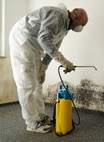
- NIOSH Protective Clothing Topic Page. This page guides selection of chemical protective clothing. It also shares resources from NIOSH’s Protective Clothing and Ensembles program. This program incorporates a broad range of studies of how chemicals might reduce clothing protection by:
- Crossing through barrier materials
- Leaking through small holes
- Changing the barrier material
NIOSH publications include recommendations for the selection and use of protective clothing. For example, potential hazards include biological agents, chemical warfare agents, chemical hazards, and hazardous waste. Other NIOSH resources include personal protective technology programs, permeation calculators, and testing reviews. All of these resources provide general guidance for emergency response and recovery workers.
- Recommendations for the Selection and Use of Respirators and Protective Clothing for Protection Against Biological Agents. This publication provides recommendations on how to protect workers against biological agents. The authors based this document on the current understanding of the potential agents and existing recommendations for biological aerosols. It focuses on acts of terrorism. The recommendations discuss the potential of biological particles to penetrate through pores, gaps, and closures in the protective garment. This supports the need to perform fit testing. It also identifies protective ensembles designed to protect workers from chemical, biological, radiological, and nuclear hazards. The authors also cover the presence of secondary releases with adverse effects.
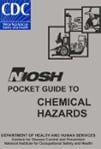
- NIOSH Interim Guidance on Personal Protective Equipment and Clothing for Flood Response Workers. This provides information on hazards to flood cleanup workers and guidance for selecting clothing and protective equipment. The webpage covers the use of:
- Electrically insulated watertight boots
- Cut-resistant gloves
- Goggles and safety glasses
- Hearing protection
- Coveralls
- Respirators
- En Español
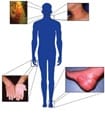
- NIOSH Pocket Guide to Chemical Hazards. The NIOSH Pocket Guide to Chemical Hazards is a source of general industrial hygiene information. It is for occupational health professionals, workers, and employers. The guide provides information about chemical hazards in the workplace. It has an index with several hundred chemicals that may exist in work environments. The guide shares some key data for each chemical including:
- Name (synonyms, trade names)
- Exposure limits
- Concentrations that are immediately dangerous to life or health (IDLH)
- Chemical and physical properties, and measurement methods
- Personal protection recommendations
- How to identify symptoms and first aid advice
- NIOSH Skin Exposures and Effects Topic Page. The following website offers information related to NIOSH skin research. The page focuses on skin hazards, dermal absorption, skin dermatitis, and functions of the skin. It also shares a link to the NIOSH skin permeation calculator. The calculator allows users to measure the conductance of skin to a particular chemical from a particular vehicle.
Respirators are one of the most important pieces of personal protective equipment for workers. These are especially critical when other control systems are not feasible to protect the health and safety of workers. Respirators cover at least the nose and mouth of users. They remove contaminants from the air by filtering airborne particles or chemical agents from the air. This type of respirator is an air-purifying respirator. Another type of respirator is an air supplying respirator. Air supplying respirators include self-contained breathing apparatus (SCBA) and airline respirators. SCBA respirators include their own air supply. Airline respirators use compressed air from a remote source. Particulate respirators can include filtering facepiece respirators. These are usually suitable for single-use, elastomeric respirators, and powered air-purifying respirators. The selection of an appropriate respirator depends on the type of particle or chemical it is protecting from. Users should perform fit testing before use and be aware of respiratory training. They should also check for NIOSH respirator approvals. The following webpages provide access to resources and tools related to the use and selection of respiratory protection.
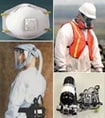
- NIOSH Respirator Topic Page. The NIOSH respirator topic page provides information on basic respiratory protection. It includes types of respirators, user notices, respirator selection, respirator certification process, and standards. Other available resources include:
- NIOSH publications related to the use of respirators under varied conditions
- Certified equipment list
- NIOSH approved respirators
- Training videos
- Donning and doffing videos
- Respiratory protection recommendations
- NIOSH Respirator Selection Logic 2004. This document guides program administrators through selecting appropriate respirators for workers in specific workplaces. Replaces the NIOSH Respirator Decision Logic and includes information on N-95 through P-100 particulate respirators. The content includes:
- General information and restrictions
- Criteria for selecting respirators
- Restrictions and requirements for all respirator usage
- Logic sequence for the selection of particulate respirators, gas/vapor respirators, escape respirators
- Exposure limits

- Chemical Warfare Agent (CWA) Testing for NIOSH CBRN Respirator Approvals. NIOSH follows standard procedures for testing respirators. This notice asks manufacturers to stop labeling affected respirators as approved. The page describes the case and the actions taken by NIOSH. The page contains links to the NIOSH Standard testing procedures for chemical warfare agent tests conducted on CBRN respirators. These tests included both air-purifying and atmosphere-supplying respirators.

- Guidance on Emergency Responder Personal Protective Equipment (PPE) for Response to CBRN Terrorism Incidents. This shares guidance on using personal protective equipment while responding to chemical, biological, radiological, and nuclear emergencies related to terrorism incidents. The guidance describes different hazardous waste operations and emergency response (HAZWOPER) standards. Protection levels vary between levels A, B, and C, depending on the knowledge available on the hazard. The guidance describes personal protective equipment performance standards for each type of respirator. It also provides a comparison of respirator and ensemble combinations to OSHA-EPA levels. The department of homeland security provides some additional guidance.
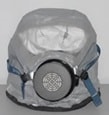
- Protecting Emergency Responders, Volume 4: Personal Protective Equipment Guidelines for Structural Collapse Events. This guidance focuses on three issues that present unique challenges in the response to structural collapse events:
- Protection from biological hazards
- Protection from inhalation of hazardous materials
- Required modifications to responders’ typical PPE ensembles because of the duration and intensity of the response
- NIOSH/Rand series
- What You Should Know in Deciding Whether to Buy Escape Hoods, Gas Masks, or Other Respirators for Preparedness at Home and Work. This information is for anyone considering purchasing escape hoods or other respirators to protect themselves against potential terrorist threats. These include biological and chemical substances. This guide provides information on:
- What respirators are appropriate
- How they work
- Requirements for a respirator to provide protection
- Certified Equipment List. This searchable database contains a list of certified NIOSH-approved respirators that meet quality protection criteria. Users can search for the equipment necessary to protect themselves according to their needs and particular hazards. Users can apply different filters such as type of respirator, protection, manufacturer, facepiece type, SAR Type, label, etc.
- OSHA / NIOSH Personal Protective Equipment Selection Matrix for Emergency Responders. During emergencies, emergency responders might encounter chemical, biological, radiological, and nuclear hazards. There are three different classification zones for the contaminated area. The guidance identifies areas where chemical contamination is more or less likely. The guidance uses a zone matrix (red, yellow, and green). It also lists specific risks and guidance on selecting PPE in each zone. It also offers specific hazard information on nerve agents, blister agents, and radiological dispersal devices.
- OSHA/NIOSH Interim Guidance: CBRN Personal Protective Equipment Selection Matrix for Emergency Responders – Radiological Dispersal Device. This is for employers in an emergency response event related to a Radiological Dispersal Device (RDD), or “Dirty Bomb”. This refers to explosive devices surrounded or contaminated with radioactive material. The radiation hazard depends on the source material. This page describes the recommended personal protective equipment to prevent exposure to radioactivity. It provides exposure limits associated with ionizing radiation.
- OSHA/NIOSH Interim Guidance – CBRN Personal Protective Equipment Selection Matrix for Emergency Responders- Nerve Agents. This gives technical assistance to employers in an emergency response event related to nerve agents. Nerve agents refer to organophosphate chemicals that are highly toxic and designed for military warfare. These agents disrupt the nervous system and are extremely toxic to human health. The selection of personal protective equipment depends on the knowledge level available of the chemical of interest. This page summarizes CDC and US Army exposure limits to nerve agents. It also provides specific recommendations to prevent and limit exposure to nerve agents.
- OSHA/NIOSH Interim Guidance – CBRN Personal Protective Equipment Selection Matrix for Emergency Responders – Blister Agents. Blister agents have irritating properties that act on the skin causing swelling and inflammation until it progresses to blisters. Blister agents can affect other tissues such as eyes and respiratory tissue. The blister agents cause the flow of tears, to abnormal or excessive levels. They can also cause damage to the eye surface and make the respiratory tissue susceptible to adverse effects. This webpage provides technical assistance to employers in an emergency response event related to exposure to blister agents. This webpage provides a summary of CDC and US Army airborne exposure limits for airborne substances. It also provides a selection guide for PPE depending on exposure guideline levels and the associated effects of these hazards.
- Suggested Respirator Cleaning and Sanitation Procedures. The following page guides selecting cleaning equipment and supplies for respirator disinfection. The webpage provides general sanitizing guidance and videos with procedures for respirator maintenance.
